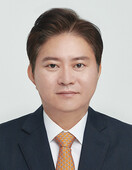Two exhibitions in Seoul revisit the Art Nouveau master whose vision transcended ornament and reached toward a universal humanism.
Seoul is hosting two major exhibitions on Alphonse Mucha (1860–1939) this season, reigniting interest in the iconic figure of the Art Nouveau movement. While one focuses on original works and historical context, the other explores the enduring influence of his visual language on graphic design and contemporary culture.
Mucha rose to fame in Paris with his 1894 poster Gismonda, created for the legendary actress Sarah Bernhardt. His flowing lines, floral motifs, and idealized female figures soon defined what came to be known as “le style Mucha,” a visual code still recognizable today in advertising, illustration, packaging, and popular media. Although widely associated with decorative art, Mucha sought something beyond ornament: he believed beauty could carry philosophical meaning and collective identity. That journey ultimately led him back to his homeland, where he spent two decades creating The Slav Epic (1912–1926)—a monumental cycle celebrating the history and spiritual legacy of the Slavic people.
This dual identity—Parisian master of Art Nouveau and national historian of a people—lies at the core of why Mucha remains relevant today.
Yeouido: A Grand Retrospective of Original Works
The major exhibition Alphonse Mucha: Light and Dreams, held at The Hyundai Seoul ALT.1 in Yeouido, offers a comprehensive retrospective of Mucha’s career. The show includes 143 original works, among them 11 state-designated cultural treasures approved for overseas loan by the Czech government and the EU, and roughly 70 works being shown in Korea for the first time.
Eighteen oil paintings transported from Prague and London are featured, along with the first Korean presentation of the Mucha House, an installation displaying the artist’s personal belongings, archival materials, and narrated video commentary by his grandson, John Mucha.
The exhibition is organized by the Mucha Trust, the official foundation responsible for preserving and managing Mucha’s artistic legacy. Tomoko Sato, curator of the foundation, led the exhibition, while John Mucha attended the opening in person—a gesture that underscores the show’s significance. Structured into six thematic sections, the exhibition traces Mucha’s trajectory from Parisian poster designer to a creator of national and humanistic narratives. The show runs until March 4, 2026.
Magok: A Sensory Exhibition of Style, Pattern, and Cultural Influence
The second exhibition, The Flower of Art Nouveau: Alphonse Mucha, is presented at My Art Museum One Grove in Magok. Unlike the Yeouido retrospective, this show is a design-driven, experience-focused exhibition exploring how Mucha’s visual language permeated everyday culture.
Featuring around 300 works, including posters, lithographs, drawings, and paintings, the exhibition highlights the decorative elements that spread from Parisian street posters to global graphic culture, media imagery, and commercial design. Iconic works for Sarah Bernhardt anchor the exhibition’s narrative, accompanied by patterns, florals, gold motifs, and idealized female figures that define the aesthetic vocabulary of Art Nouveau. Rather than focusing on national identity or historical narrative, the show presents Mucha as a stylistic pioneer whose work laid the groundwork for modern graphic design. The exhibition runs through December 7, 2025.
Together, the two Seoul exhibitions offer dual perspectives:
Yeouido — "Original works, legacy, history"
Magok — "Style, imagery, visual culture"
Why Mucha Matters Now
Today's Korea is saturated with imagery—fast-moving, instantly consumable, relentlessly opinion-driven. Voices multiply, perspectives collide, and information rarely converges into shared meaning. It is a society rich in expression yet often impoverished in direction. In such a climate, Mucha’s return carries more than aesthetic nostalgia.
Though remembered for ornament, Mucha’s lines were rooted in nature—the curve of a stem, the rhythm of seasons, the soft geometry of the human face. His flourishes were not embellishment but a path back to what is essential. In an era defined by fragmentation, he invites us to remember what was lost.
His work seems to whisper:
“Look not at what is loudest, but what was meant to be seen.”
Like fallen leaves settling over late-autumn Seoul, the two exhibitions offer a moment of pause—an invitation to step out of the noise and return to origins, to meaning, to the humanity beneath the image.
SayArt.net
Jason Yim yimjongho1969@gmail.com































